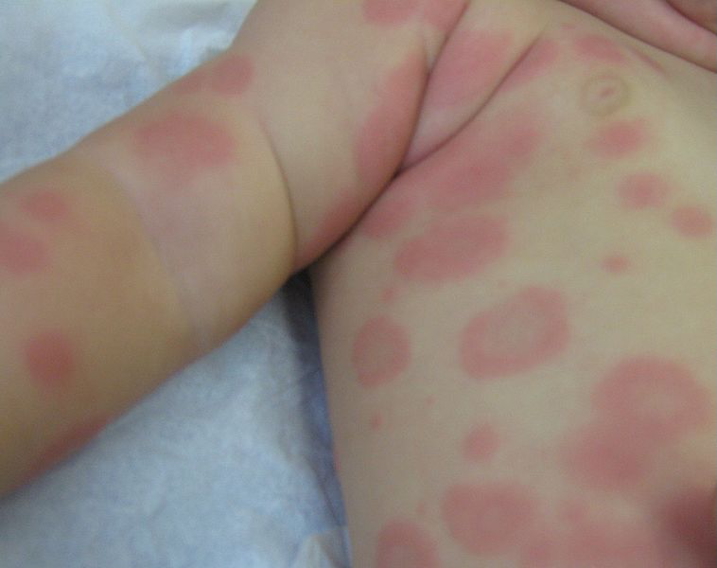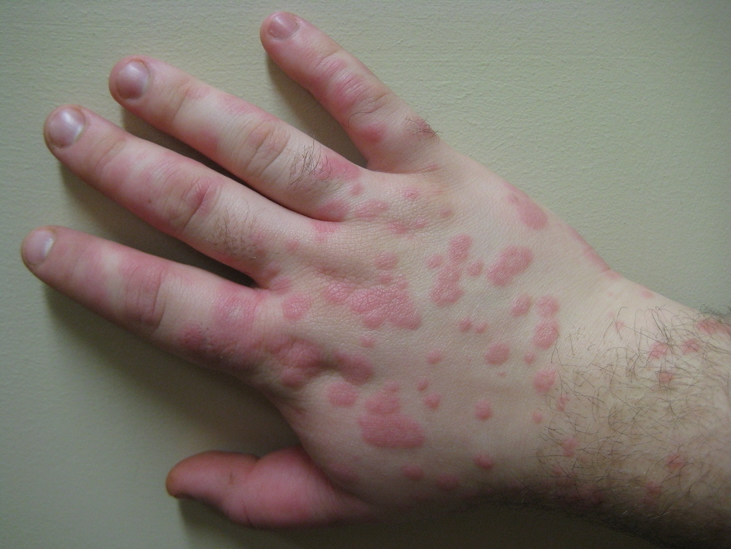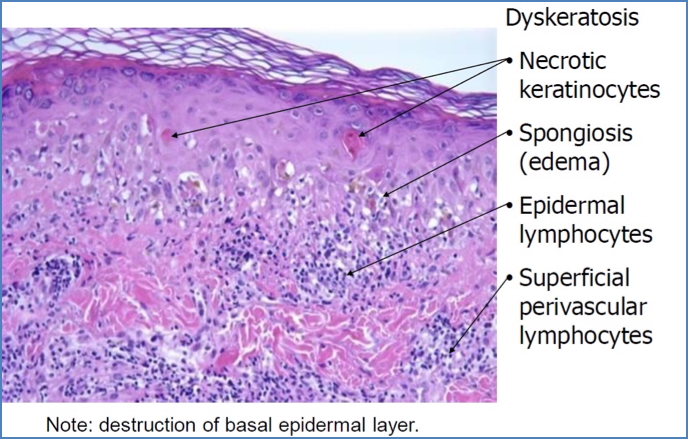Table of Contents
Overview – Erythema Multiforme
Erythema multiforme (EM) is an acute, immune-mediated skin condition typically triggered by infections, drugs, or systemic illness. It is characterised by distinctive target lesions and often affects the extremities symmetrically. While alarming in appearance, erythema multiforme is usually self-limiting. Prompt recognition helps distinguish it from more severe dermatoses like Stevens-Johnson Syndrome.
Aetiology
- Hypersensitivity reaction
- Genetic predisposition (e.g. HLA-B15, HLA-B35, HLA-A33, HLA-DR53, HLA-DQB1*0301)
Pathogenesis
Triggered by a cell-mediated immune response to:
- Infections (most common):
- Herpes simplex virus (HSV) – especially recurrent cases
- Mycoplasma pneumoniae
- Medications:
- Sulphonamides
- Penicillin
- Barbiturates
- Malignancies:
- Carcinomas, lymphomas
- Autoimmune conditions:
- Systemic lupus erythematosus (SLE)
- Sjögren’s syndrome
- Dermatomyositis
Morphology
Gross Appearance
- Polymorphic lesions: papules, plaques, nodules, vesicles, ulcers
- Classic “target” lesions:
- Central zone of grey necrosis
- Surrounded by an erythematous, raised border
- Symmetric distribution, especially on extensor surfaces of limbs


2. James Heilman, MD, CC BY-SA 3.0 <https://creativecommons.org/licenses/by-sa/3.0>, via Wikimedia Commons
Histopathology
- Dyskeratosis
- Necrotic keratinocytes
- Spongiosis (intercellular oedema of the epidermis)
- Lymphocytic infiltration of the epidermis
- Destruction of the basal layer of the epidermis

Clinical Features
- Acute onset, typically resolving within 2–4 weeks
- Often affects young adults (20–40 years)
- Lesions may be:
- Mild and localised
- Widespread but non-bullous
- Mucosal involvement is minimal or absent (differentiates from SJS)
Management (not included in original notes, but inferred)
- Identify and treat underlying cause (e.g. HSV)
- Supportive therapy:
- Antihistamines for itch
- Analgesia for pain
- Topical corticosteroids for inflammation
- Oral antivirals (e.g. acyclovir) if HSV-associated and recurrent
- Monitor for signs of progression to Stevens-Johnson Syndrome
Summary – Erythema Multiforme
Erythema multiforme is a self-limiting hypersensitivity reaction presenting with characteristic target lesions and commonly triggered by infections like HSV. Though it may appear dramatic, it is typically non-life-threatening and resolves without complications. Prompt recognition and trigger management are key. For a broader context, see our Skin & Dermatology Overview page.